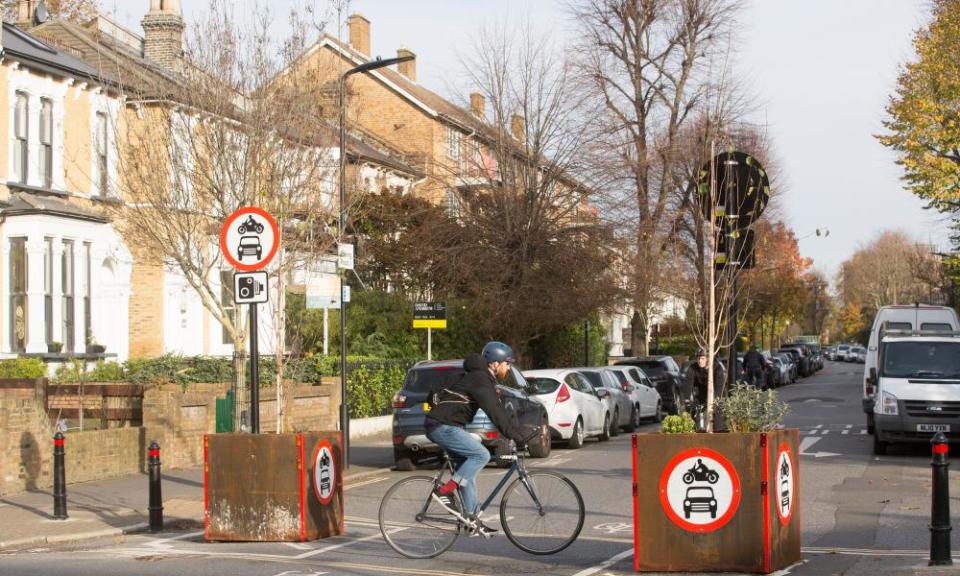Low-traffic schemes are driving congestion and pollution

George Monbiot overplays the delights of the community effect of low-traffic neighbourhoods in Oxford and underplays their disadvantages (Ignore the culture warriors – low traffic neighbourhoods don’t close streets, they liberate them, 3 August). Those living in the arterial roads, which now contain higher volumes of traffic often at a standstill, are experiencing high levels of pollution. Small businesses are closing because customer access has become difficult and suppliers cannot reach them in a timely way. Taxi drivers need to take circuitous routes to deliver passengers.
Those who need to drive cars or vans because of disability or for work are experiencing huge detours and delays. Buses cannot keep to their timetables so bus journeys are unreliable and less pleasant.
Measures have been put in place to promote cycling, but nothing has been done for pedestrians. The pavements remain uneven and hazardous. No additional seating has been provided for those needing a rest.
At a recent council meeting where the Cowley LTNs were confirmed, there was little sign of meaningful debate. My letters to councillors have mostly gone unanswered. Residents are desperate and frustrated.
Hilary Walker
Oxford
• Oxfordshire county council seems to have a modern-day stance on George Orwell’s Animal Farm: four wheels bad, two wheels or legs good. In the eastern Oxford suburb of Cowley, where three major LTN schemes were enforced, there was very little consultation, and a majority of those in the affected areas voted against the proposals. LTNs have simply moved congestion and pollution from one set of roads to another.
What seems like a good idea on paper has been atrociously implemented, against the will of the majority of residents. I have witnessed no increase in the number of children playing in the LTN streets.
Simon Jones
Oxford
• George Monbiot suggests that “there could scarcely be a more reasonable policy” than introducing LTNs – not for disabled people like me who have serious mobility difficulties and are reliant on our cars for independence, working and raising families and contributing to society.
In defiance of the public sector equality duty, I’m not aware of my local council carrying out any consultation before implementing a trial of LTNs. If it had consulted us properly, we would have told them that “people-friendly streets” are not helpful for wheelchair users like me and other disabled people.
My council is supposed to be planning “exceptional exemptions” for blue badge holders. Two years on, we are still waiting. And it won’t help me as I live one road away from what the council is calling “boundary roads”.
What used to be a three-minute journey to Highbury Corner in Islington, north London, can now take up to 40. Along this short route there are three schools and colleges, and much social housing and shops, which now have to deal with constant bumper to bumper traffic. Taxis are no longer willing to pick up disabled people who live in or near our LTN.
What disabled people want is to be listened to and reasonable adjustments made to policy, including proper exemptions for blue badge holders.
Lois Keith
London
• I live in a low-traffic zone in Hackney, east London. Before it was implemented, a small minority fought hard to have it stopped. The arrival of LTNs signals a seismic shift in thinking. No longer does the convenience of a few override the needs of the many. As I walked my dog in the evening, a neighbour’s child was hitting a tennis ball against a wall. It was the first time I had seen this in more than 30 years. It gives me hope that maybe we have finally turned a corner.
Alun Gordon
London
• Have an opinion on anything you’ve read in the Guardian today? Please email us your letter and it will be considered for publication.

 Yahoo Movies
Yahoo Movies 